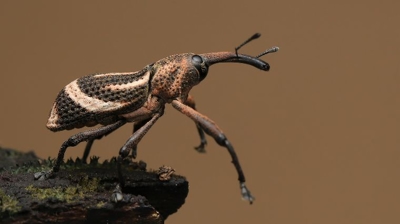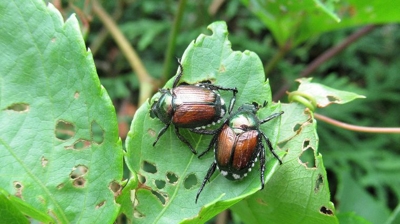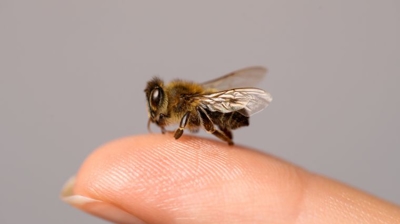
Fishflies
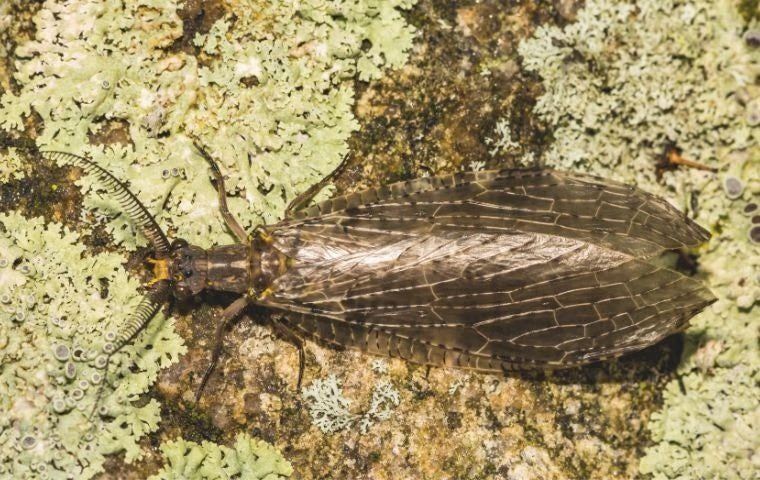
What Are Fishflies?
Fishflies are large winged insects (not actually flies) that belong to the order Megaloptera, family Corydalidae. These insects are commonly found near freshwater sources like rivers, streams, and lakes, as their larvae are aquatic.
Are Fishflies Harmful?
Fishflies are not harmful to humans, pets, property, or crops. Despite their intimidating appearance and large size, they are harmless and generally considered a nuisance rather than a threat:
- Swarming: During peak emergence, they may appear in large numbers, particularly near water and artificial lights. This can create slick surfaces from crushed bodies (hazardous on roads or sidewalks), foul odors (often described as “fishy,” especially when they die en masse), and visual disturbances or discomfort from swarms fluttering around lights or windows.
- Attracted to Light: Like many nocturnal insects, fishflies are drawn to bright outdoor lighting, especially near water.
- Bites or Stings: Adult fishflies do not bite or sting. Some species, particularly males, have large mandibles that look menacing, but these are used for mating displays rather than defense or feeding.
- Allergies or Toxicity: Fishflies are not venomous, and there are no known allergens specifically associated with them.
- Physical Contact: If handled, they might flap their wings or crawl awkwardly, which can be startling but not dangerous.
- Do Not Infest Homes: Fishflies do not invade homes in the way that ants, termites, or roaches do. They may accidentally enter buildings if attracted to lights, but they don't breed indoors or cause damage.
- No Structural Damage: They do not chew, bore, or nest in wood, insulation, or wiring.
- Short Lifespan: Adults live only a few days to a week, making any presence temporary.
Fishfly Appearance
Fishflies have a distinct, dramatic appearance that can be startling at first glance due to their large size and unusual features:
- Size: Adult fishflies are large insects, typically 1 to 2.5 inches (25 to 65 mm) in body length, with an even greater wingspan.
- Color: Most are grayish-brown or dark brown, sometimes with mottled or smoky wing patterns that help them blend into tree bark or leaves.
- Wings: Two pairs of long, membranous wings. The wings are clear to grayish, often with dark veins or speckles. At rest, the wings are held roof-like over the body, unlike dragonflies (which hold theirs flat).
- Head and Antennae: Large, rounded head with prominent compound eyes. Antennae are long and thread-like, sometimes feathery (especially in males). In some related species, males have large, tusk-like mandibles (e.g., dobsonflies), though this feature is less dramatic in typical fishflies.
- Body: The body is soft and elongated, somewhat flattened, and segmented. Often fuzzy or hairy in appearance, particularly along the thorax and legs. Legs are spindly and adapted for perching.
Larval Stage (Hellgrammites)
Though not often seen unless you're near water:
- Dark brown to black, with a tough, segmented body.
- Up to 3 inches long.
- Equipped with strong mandibles, lateral filaments (feathery gills), and clawed legs.
- Aquatic, typically found under rocks or submerged debris in fast-flowing streams.
Fishfly Habitat
Fishflies are most commonly found in regions near freshwater bodies such as rivers, streams, lakes, and ponds, especially those with clean, well-oxygenated water. Their distribution is heavily influenced by the aquatic environment required for their larval stage (hellgrammites), which is the longest part of their life cycle.
Geographic Distribution
- Great Lakes Region: Especially around Lake Erie, Lake Ontario, and parts of Michigan, Ohio, Pennsylvania, and New York. Massive seasonal hatches are common here.
- Midwestern U.S.: States like Illinois, Indiana, Wisconsin, and Minnesota see regular populations near rivers and lakes.
- Northeastern U.S.: Common in New England, New Jersey, and upstate New York.
- Southeastern U.S.: Found near rivers and streams in Georgia, Tennessee, North Carolina, and Alabama, particularly in forested or mountainous areas.
- Eastern Canada: Especially southern Ontario and Quebec, often along the St. Lawrence River and tributaries.
Habitat Characteristics
- Water Quality: Fishfly larvae (hellgrammites) require clean, oxygen-rich, fast-moving water—making them strong indicators of good environmental health. You’ll most often find them where water is unpolluted and has gravel or rocky bottoms, such as streams and small rivers.
- Nearby Environment: Adults often emerge in wooded or semi-rural areas near these aquatic sites. They may travel short distances from water to mate, lay eggs, or seek light sources, which is why they sometimes appear in urban areas close to water.
- Artificial Lighting: At night, fishflies are commonly seen in large numbers near streetlights, porch lights, parking lots, and commercial buildings close to water. This behavior can cause significant seasonal swarms, particularly during warm, humid evenings after rainfall.
Fishfly Diet
The diet of fishflies depends entirely on which life stage they are in—larval (hellgrammite) or adult—as their behavior and biology change significantly throughout their lifecycle.
Larval Stage (Hellgrammites) – Predatory Feeders
Fishfly larvae, known as hellgrammites, are aquatic predators and are highly active feeders. This stage lasts the longest—1 to 3 years—and plays an important ecological role in freshwater environments.
- Aquatic insects (mayfly nymphs, caddisfly larvae, mosquito larvae)
- Small crustaceans
- Worms
- Small fish or fish eggs (occasionally)
- Other invertebrates living on the stream or riverbed
Hellgrammites are aggressive and effective predators, using their strong mandibles to grasp and subdue prey. They hide under rocks and debris, ambushing anything that passes by. Because of their role in aquatic food chains, they are also prized by anglers as live bait.
Adult Stage – Non-Feeding or Minimal Feeding
Adult fishflies do not feed much—if at all. Their primary biological purpose is to mate and lay eggs during their brief adult lifespan, which typically lasts only a few days to a week.
- Do not actively feed in most cases.
- Some species may sip nectar or water if available, but feeding is minimal or incidental.
- They rely on energy reserves accumulated during their larval stage.
This limited adult feeding behavior is common in many aquatic insects with short-lived adult forms, like mayflies and stoneflies.
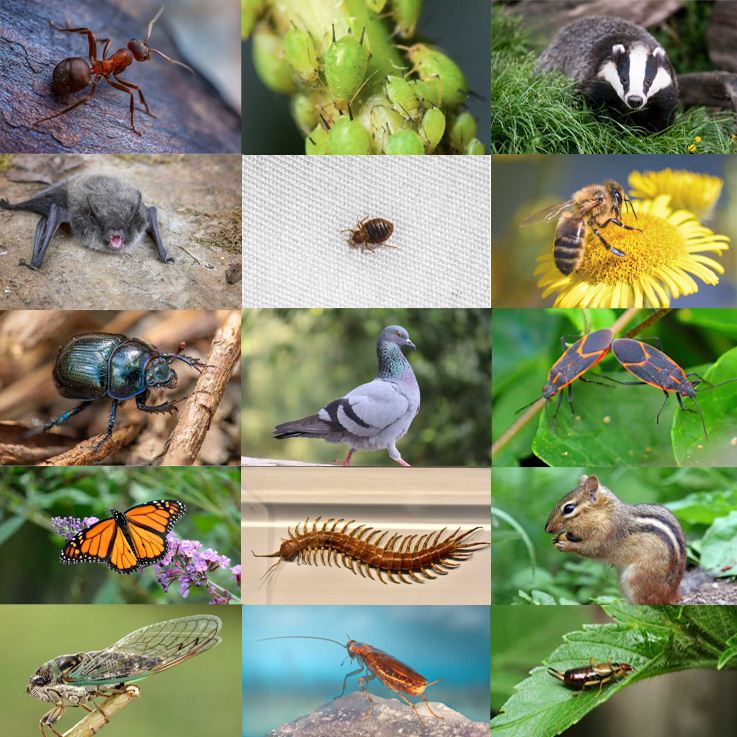
Fishfly Life Cycle
The life cycle of fishflies is a classic example of complete metamorphosis, consisting of four distinct stages: egg, larva (hellgrammite), pupa, and adult. The majority of the insect’s life is spent in the larval stage, which is aquatic and predatory, while the adult stage is brief and primarily dedicated to reproduction.
Egg Stage
- Duration: 1–2 weeks (depending on temperature and humidity)
- Location: Female fishflies lay hundreds to thousands of eggs in gelatinous clusters on overhanging vegetation, rocks, logs, or man-made structures near water (bridges, docks, pilings).
- Eggs are typically white to grayish and laid in a mass that resembles bird droppings to deter predators.
- Eggs must be laid near freshwater sources so the larvae can reach water after hatching.
Larval Stage (Hellgrammite)
- Duration: 1 to 3 years
- Habitat: Freshwater—especially clean, flowing streams and rivers
- Appearance: Up to 3 inches long, dark brown to black, with feathery gills, hooked legs, and strong mandibles
- Behavior: Larvae live under rocks, leaf litter, and submerged debris, where they are voracious predators, feeding on aquatic insects, worms, and small invertebrates.
- They are excellent indicators of healthy aquatic ecosystems because they require high oxygen levels and low pollution.
- Larvae molt 10–12 times over their lifespan as they grow.
Pupal Stage
- Duration: 2 to 4 weeks
- Location: When fully grown, the larva leaves the water and crawls to moist soil, leaf litter, or under logs near the water’s edge.
- It constructs a pupal cell in the ground and transforms into a pupa, where it undergoes metamorphosis into an adult.
- This stage is rarely observed because it takes place underground or hidden in debris.
Adult Stage
- Duration: 3 to 7 days
- Appearance: Large insect (1 to 2.5 inches), long veined wings, feathery antennae, soft gray-brown body, often mistaken for a moth or giant mayfly.
- Behavior: Adults are nocturnal, clumsy fliers, and highly attracted to lights, often leading to mass swarms near buildings and roadways.
- Adults do not feed, or feed very minimally, relying on energy stored from their larval stage.
- Their sole purpose is reproduction: mating and laying eggs before dying shortly after.

Hear From Our Happy Customers
-
"Professional & Considerate"
I’m pleased with Miche services. Jarvis came today. Professional and considerate. Thank you!
- Judy B. -
"Exceeds Expectations"
I can’t say enough positive things about this company... The tech that came out, Jarvis went above and beyond my expectations. Thank you guys, I will continue using your services.
- Jake M. -
"Wonderful Service"
Wonderful service. Jarvis is great. Took care of everything I needed. Thank you!
- Henry P. -
"Fantastic & Patient"
Jarvis was fantastic and patient. He answered my questions with an in-depth explanation and addressed all of my areas of concern. Would love for him to be my assigned tech going forward. Well done!
- Yonnette M. -
"Very Knowledgeable"
The tech that arrived was courteous, professional, and very knowledgeable. He was Great.
- Uerial I. -
"Great Communication"
Tech was on time, communication was great, and he accommodated my needs.
- Alonzo W.

